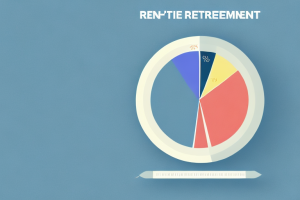Retirement age, the age at which individuals choose to stop working and transition into a new phase of life, is a topic of great importance and interest. Understanding the retirement age breakdown is crucial for individuals, employers, and policymakers alike. In this comprehensive article, we will explore the various facets of retirement age, including its distribution, influencing factors, variations across industries and countries, gender disparities, socioeconomic impacts, psychological and emotional aspects, health connections, debunking common myths, planning strategies, pros and cons of early and delayed retirement, transition period navigation, adjusting to increasing retirement ages, alternative retirement options, challenges and opportunities for older workers, social security and pension concerns, and financial planning strategies based on desired retirement age. Grab a cup of coffee and settle in, as we delve into the fascinating world of retirement age analysis.
Understanding Retirement Age: A Comprehensive Breakdown
Retirement age refers to the age at which individuals voluntarily leave the workforce and typically start receiving pensions or other retirement benefits. It is important to note that retirement age is not set in stone and can vary significantly across different countries, industries, and personal circumstances. While some people choose to retire as soon as they are eligible, others may continue working well into their golden years. The decision to retire is influenced by a multitude of factors, including financial readiness, health status, personal preferences, and cultural norms. Understanding these factors and the overall breakdown of retirement age is essential for planning one’s own retirement and making informed decisions regarding the timing of leaving the workforce.
The Importance of Knowing Retirement Age Distribution
Knowing the distribution of retirement age can provide valuable insights into the overall workforce composition and demographics. It allows us to understand the labor market dynamics and predict future trends. By analyzing retirement age distribution, economists and policymakers can develop effective strategies to address potential labor shortages or surpluses, ensure adequate social security and pension programs, and provide appropriate support systems for older workers transitioning into retirement. Moreover, individuals can gain a better understanding of where they stand in relation to their peers, enabling them to make informed decisions about their own retirement plans.
Exploring the Factors that Influence Retirement Age
Retirement age is influenced by a variety of factors that can be broadly categorized into financial, health-related, personal, and contextual factors. Financial factors include the ability to accumulate sufficient savings, access to pension plans, and the availability of social security benefits. Health-related factors encompass physical and mental health status, as well as the ability to sustain work-related activities. Personal factors such as job satisfaction, personal goals, and family responsibilities can also play a significant role in retirement decisions. Furthermore, contextual factors, including cultural norms, legal retirement ages, and industry-specific practices, can shape retirement age patterns. Understanding these factors is crucial for comprehending why retirement age varies across individuals and populations.
How Retirement Age Varies Across Different Industries
The retirement age differs significantly across various industries. While some industries, such as manual labor or physically demanding professions, often have lower retirement ages due to the physical toll that work takes on individuals, other industries, such as academia and research, may have higher retirement ages to leverage the expertise and knowledge of experienced professionals. Examining the variations in retirement age across industries can shed light on the unique challenges and opportunities faced by individuals in different sectors. It can also help organizations design effective policies and programs to support their aging workforce and ensure a smooth transition of knowledge and skills.
Analyzing Retirement Age Trends in Different Countries
Retirement age is not only diverse across industries, but it also varies significantly across countries. Cultural norms, legal retirement ages, social security systems, and economic conditions all contribute to these variations. Analyzing retirement age trends in different countries allows us to understand the impact of these contextual factors on retirement behavior. Moreover, cross-country comparisons can provide valuable insights into the effectiveness of different retirement policies and social security programs in promoting financial security and well-being for elderly populations. By studying these trends, policymakers can identify best practices and potential areas for improvement to ensure a sustainable retirement system for future generations.
Retirement Age by Gender: Unveiling the Gender Gap
Gender disparities are prevalent in various aspects of society, including retirement age. Women, on average, tend to retire earlier than men. This gender gap can arise due to a myriad of reasons, such as differences in career paths, family responsibilities, and societal expectations. Unveiling the gender gap in retirement age can help identify the root causes of the disparities and guide efforts towards achieving gender equality in retirement planning and financial security. Additionally, understanding the gender-specific factors that influence retirement age can provide valuable insights to policymakers seeking to address gender inequalities in retirement policies and programs.
The Impact of Socioeconomic Factors on Retirement Age
Socioeconomic factors, such as education level, income, and occupation, can significantly influence retirement age. Individuals with higher education and income levels often have more opportunities for financial security and may choose to retire later, while those with lower socioeconomic status may face more challenges in accumulating sufficient savings and may retire earlier. Exploring the impact of socioeconomic factors on retirement age is crucial for understanding the potential inequalities in retirement outcomes and designing targeted interventions to ensure equitable access to a comfortable retirement for all individuals, regardless of their socioeconomic background.
Examining the Psychological and Emotional Aspects of Retirement Age
Retirement is not just a financial and physical transition; it also has significant psychological and emotional implications. Many individuals associate their identity and self-worth with their jobs, making retirement a profound life change that can lead to mixed feelings of excitement, loss, and uncertainty. Examining the psychological and emotional aspects of retirement age can help individuals and society at large better understand and prepare for the challenges and opportunities that come with this transition. It can also inform the development of counseling and support programs to ensure a smooth psychological adjustment to retirement.
The Connection Between Health and Retirement Age
Health plays a crucial role in retirement decisions. Physical and mental health conditions can influence an individual’s ability to continue working or choose early retirement. Understanding the connection between health and retirement age can help policymakers and organizations develop health promotion programs tailored to older workers, ensuring their well-being and ability to continue working if desired. Moreover, individuals can use this knowledge to plan for their retirement by taking proactive steps to maintain good health and making informed decisions about the optimal timing of retirement based on their health status.
Debunking Common Myths About Retirement Age
Retirement age is often surrounded by myths and misconceptions. Debunking these myths is essential for individuals to make informed decisions regarding retirement planning. Common myths include assumptions that retirement age is fixed, that everyone should retire at the same age, or that retirement means complete disengagement from work. By dispelling these misconceptions and providing accurate information, individuals can make retirement choices that align with their personal goals, financial situation, and overall well-being.
Strategies for Planning Your Retirement Based on the Average Age
The average retirement age can serve as a benchmark for individuals to plan and prepare for their own retirement. Understanding the factors influencing retirement age and reviewing the average retirement age for their industry and country can help individuals gauge whether they are on track or need to make adjustments to their retirement savings and overall financial plans. Employing various strategies, such as regular savings contributions, investment diversification, and seeking professional financial advice, can help individuals plan and achieve a secure retirement based on the average retirement age for their desired lifestyle and financial goals.
The Pros and Cons of Early Retirement: Is it Right for You?
Early retirement, defined as retiring before the traditional retirement age, is a dream for many individuals. However, it comes with its own set of pros and cons. Exploring the advantages and disadvantages of early retirement is crucial for individuals considering this possibility. On one hand, early retirement can offer freedom, more leisure time, and an opportunity to pursue personal interests. On the other hand, it may require careful financial planning, potential adjustments to lifestyle, and considerations for long-term financial security. Assessing personal goals, financial readiness, and lifestyle preferences is essential before making the decision to retire early.
The Financial Implications of Delaying Retirement: Is it Worth It?
Delaying retirement beyond the traditional age can have significant financial implications. Continuing to work and contribute to retirement accounts can increase savings, extend the period of earning a salary, and potentially enhance social security benefits. However, there are trade-offs to consider, such as the impact on health and well-being, the potential loss of work-life balance, and the ability to enjoy retirement while still in good health. Weighing the financial benefits against the personal and lifestyle considerations is essential when deciding whether it is worth delaying retirement.
How to Navigate the Transition Period Leading up to Retirement
The transition period leading up to retirement can be both exciting and stressful. It is essential to navigate this phase wisely to ensure a smooth transition into retirement. Planning for financial changes, building a support network, exploring new hobbies, and setting new goals can all contribute to a fulfilling retirement. By taking proactive steps to prepare for the transition period, individuals can maximize their chances of enjoying a rewarding retirement experience.
Preparing for a Longer Working Life: Adjusting to Increasing Retirement Ages
With increasing life expectancy and societal changes, many countries are adjusting their retirement policies to reflect the reality of longer working lives. Individuals need to adapt to these changes and prepare for the potential need to work for more years. By staying updated on retirement policies, reviewing financial plans, and maintaining employability through continuous learning, individuals can navigate the challenge of increasing retirement ages and ensure a financially secure and fulfilling working life.
Exploring Alternative Options to Traditional Full-Time Retirement
Traditional full-time retirement is not the only option available for individuals approaching retirement age. Exploring alternative retirement options, such as phased retirement, part-time work, or entrepreneurship, can provide unique advantages and opportunities. These alternatives allow individuals to maintain social connections, continue earning income, and find purpose and fulfillment in their post-employment years. Understanding and considering these options can broaden the horizons when planning for retirement and lead to a more customized and satisfying retirement experience.
Challenges and Opportunities for Older Workers in the Changing Job Market
The job market is constantly evolving, and older workers can face specific challenges and opportunities. Ageism, technological advancements, and shifting workplace dynamics can pose obstacles to older workers seeking employment or career progression. However, older workers also bring valuable experience, wisdom, and skills that can be highly sought after by employers. By understanding the changing job market and staying adaptable and up-to-date with industry trends and technologies, older workers can navigate the challenges and seize the opportunities that arise in the modern workforce.
Addressing Concerns about Social Security and Pension Programs in Relation to Retirement Age
Social security and pension programs play a crucial role in providing financial support for retirees. However, these programs are often subject to debates and concerns related to retirement age. Questions of solvency, adequacy of benefits, and fairness arise when discussing the relationship between retirement age and social security or pension programs. Addressing these concerns requires careful analysis and evaluation of both the economic and social implications of retirement age policies. It also necessitates proactive measures to ensure the long-term sustainability and effectiveness of these programs in supporting retirees.
Strategies for Successful Financial Planning Based on Your Desired Retirement Age
Financial planning plays a vital role in achieving a secure retirement. Developing effective strategies based on your desired retirement age is essential for ensuring financial readiness. Considerations such as setting realistic goals, estimating income and expenses, diversifying investments, optimizing tax efficiency, and regularly reviewing and adjusting plans are all integral to successful financial planning. By taking a proactive approach to financial planning and seeking professional advice when needed, individuals can be better positioned to achieve their financial goals and enjoy a comfortable retirement at their desired age.
Conclusion
In conclusion, retirement age breakdown encompasses a wide range of factors, trends, and considerations. Understanding retirement age distribution, exploring the influencing factors, analyzing variations across industries and countries, addressing gender disparities, considering socioeconomic impacts, examining psychological and emotional aspects, and connecting retirement age to health and well-being are crucial for both individuals and policymakers. Debunking common myths, planning strategies, evaluating the pros and cons of early and delayed retirement, navigating the transition period, exploring alternative retirement options, and addressing job market challenges offer further insight into retirement planning. Lastly, addressing concerns about social security and pension programs and developing successful financial planning strategies based on desired retirement age ensure a secure and fulfilling retirement. By delving deep into the retirement age breakdown, we can make informed decisions and embrace the next chapter of our lives with confidence and anticipation.



